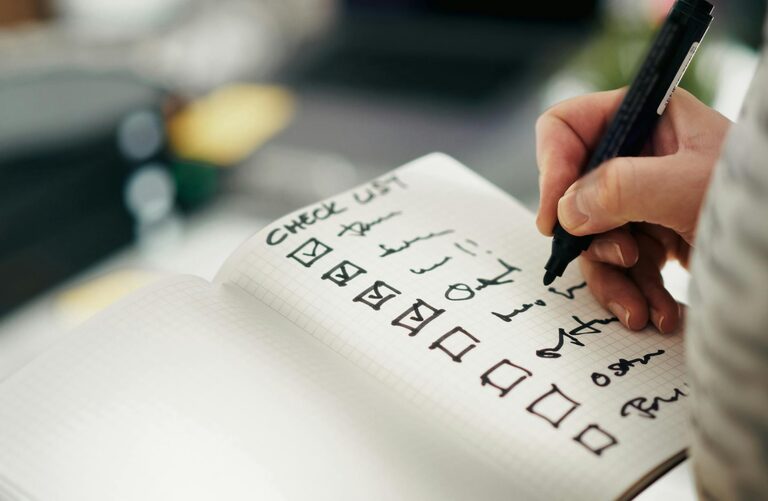Bullet journaling has become a popular method to organize tasks, track habits, and express creativity—all in one notebook. If you’re new to bullet journaling, this beginner guide will walk you through the essentials and help you get started on the right foot.
What Is Bullet Journaling?
Bullet journaling is a flexible system for managing your to-do lists, calendars, goals, and notes. Created by Ryder Carroll, it combines simple symbols and layouts that you can customize to suit your lifestyle. Unlike traditional planners, bullet journals are designed to be adaptable, helping you stay organized in a way that feels natural.
Why Start Bullet Journaling?
– Customizable: You can set up your journal exactly how you want it.
– Creative outlet: Use colors, doodles, and decorations for added fun.
– Productivity boost: Keep track of daily tasks, appointments, and goals.
– Mindfulness: Reflect on your progress and habits regularly.
Supplies You’ll Need
The great thing about bullet journaling is its simplicity. Here’s what you’ll need to get started:
– Notebook: Choose dotted or plain pages for flexibility. Popular sizes include A5 or a traveler’s notebook.
– Pen: Any pen works, but many prefer fine liners or gel pens.
– Ruler: Helps with creating straight lines and neat layouts.
– Optional: Colored pens, markers, stickers, or washi tape if you want to add personality.
Basic Bullet Journal Elements
1. Index
The index is like a table of contents. It helps you quickly find important pages. On the first few pages, reserve space for the index. As you add collections or logs, note the page number here.
2. Future Log
The future log gives you an overview of upcoming months. It’s a great place to write down appointments, events, and important dates that are not part of your monthly or daily spreads yet.
3. Monthly Log
The monthly log breaks down tasks and events by month. Typically, a calendar layout or list-style log works here. It provides a snapshot of your month’s priorities.
4. Daily Log
The daily log is where you jot down your to-dos, notes, and events for each day. Using bullets and simple symbols keeps it organized and easy to scan.
5. Collections
Collections are custom lists or trackers that don’t fit into daily or monthly logs. Examples include habit trackers, book lists, meal planners, or project outlines.
How to Use Bullet Journal Symbols
Bullet journaling uses simple symbols to keep things clear:
– Task: • (a bullet)
– Event: ○ (an open circle)
– Note: – (a dash)
– Priority task: * (an asterisk)
– Completed task: X
– Migrated task: > (task moved to another day)
These symbols help you quickly understand the status of each item.
Step-by-Step: Setting up Your First Bullet Journal
Step 1: Set Up the Index
Reserve the first 2–4 pages for your index. Label each new section or collection here as you go.
Step 2: Create Your Future Log
Divide 2–4 pages into monthly sections. Write down any upcoming events or deadlines you already know.
Step 3: Make Your First Monthly Log
Design a calendar or list for the current month. Include important dates and space for monthly goals or tasks.
Step 4: Start Your Daily Logs
Begin with today’s date and list all your tasks, events, and notes. Use the bullet symbols to categorize them.
Step 5: Add Collections as Needed
Think about what you want to track—healthy habits, reading lists, expenses—and create pages for them. Don’t forget to log these in your index!
Tips for Staying Consistent
– Keep it simple at first: Don’t feel pressured to add elaborate designs until you’re comfortable.
– Set a daily or weekly check-in: Spend a few minutes updating your journal regularly.
– Use your journal wherever you go: A notebook is portable and can keep you organized throughout the day.
– Experiment with layouts: There’s no right or wrong way to bullet journal. Find what suits you best.
– Be patient: It may take a few weeks to develop the habit and discover what works.
Inspiration to Customize Your Journal
– Use different colored pens for categories (work, personal, health).
– Add doodles or motivational quotes.
– Combine your journal with goal-setting techniques like SMART goals.
– Try habit trackers to build new routines.
– Include gratitude logs for mindfulness.
Conclusion
Bullet journaling is an easy-to-adapt system that blends planning with creativity. As a beginner, focus on learning the basics and building a routine. Over time, your bullet journal can become a personal assistant, an inspiring journal, and a productivity tool all in one. Grab a notebook and pen, and start your bullet journaling journey today!
—
Feel free to share your bullet journaling experiences or questions in the comments below. Happy journaling!

